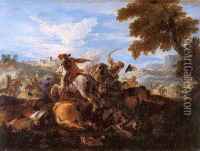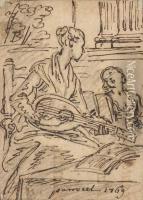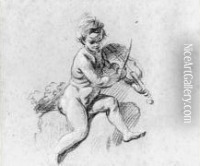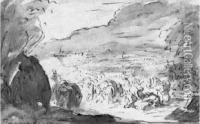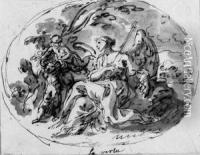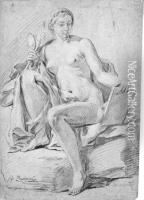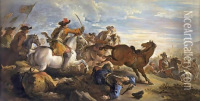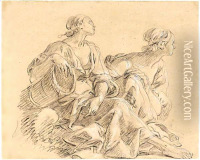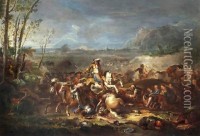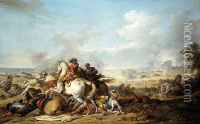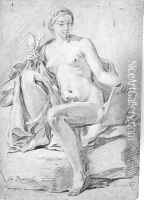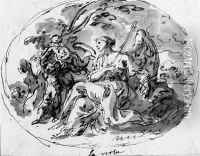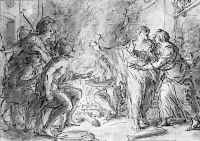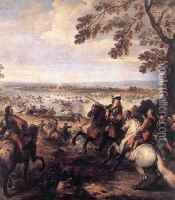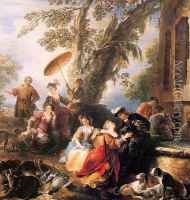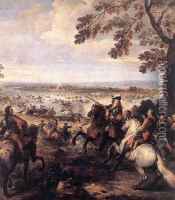Joseph Parrocel Paintings
Joseph Parrocel was a French Baroque painter, known primarily for his battle scenes. He was born on October 3, 1646, in Brignoles, a small town in the Provence region of France. His artistic lineage was strong, with his father, Barthélemy Parrocel, and his grandfather, also being painters. Joseph was initially trained by his father before moving to Paris to further his education under the guidance of the history painter Charles Le Brun, who was the court painter for Louis XIV and a dominant figure in 17th-century French art.
Parrocel's early work was influenced by the Italian baroque style and by the works of Flemish artists such as Peter Paul Rubens. His first major commission came in 1675 when he was asked to create a series of paintings depicting the conquest of Franche-Comté, which brought him significant recognition. His success with these works led to further royal commissions, including a series of paintings illustrating Louis XIV's campaigns during the Dutch War.
Throughout his career, Parrocel became known for his dynamic portrayal of military subjects, often depicting the heat of battle with a lively and vigorous brushwork that conveyed the chaos and intensity of war. His paintings are characterized by a masterful use of light and shadow, a strong sense of movement, and a dramatic, almost theatrical, presentation of historical events.
In addition to his battle scenes, Parrocel also painted religious subjects and was involved in the decoration of several churches in Paris. He was admitted to the Académie Royale de Peinture et de Sculpture in 1676, and his work continued to be in demand throughout his life.
Parrocel's legacy includes his influence on later artists, particularly in the realm of battle painting. His son, Charles Parrocel, also became a painter, continuing the family tradition. Joseph Parrocel's works can be found in various museums and collections across France and Europe.
Joseph Parrocel died on March 1, 1704, in Paris. His contributions to French art, particularly in his vivid and dramatic depictions of warfare, have secured his place as an important figure in the Baroque period and as a notable precursor to the genre of battle painting that would flourish in the 18th century.
